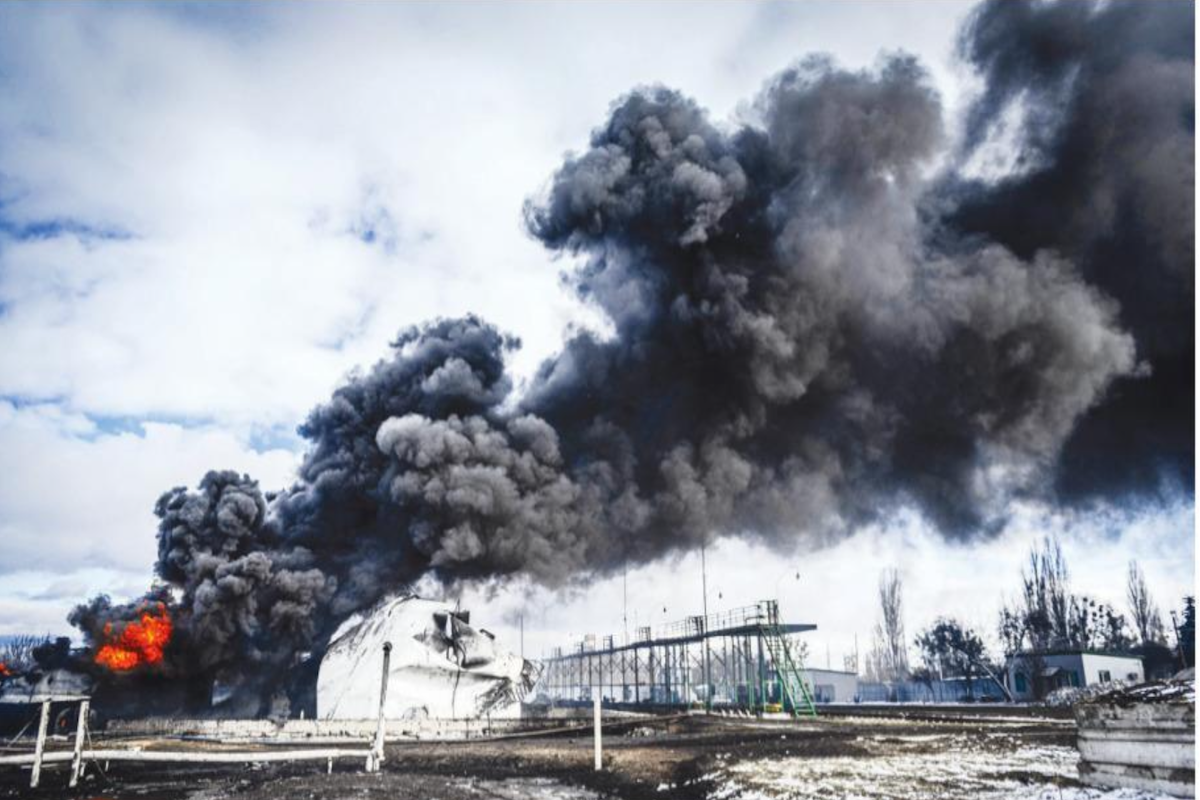Europe’s Defence
Revelations about the state of Europe’s defences are a stark reminder of the urgent need for a robust and united approach to security within NATO.
Since the end of World War II in 1945, this is the first time one nation has tried to redraw borders in Europe. Russian preparation for the invasion coincided with the wrapping up of the 2021 United Nations Climate Change Conference (COP 26) in November 2021.

On 24 February, Russian President Vladimir Putin launched an all-out invasion of Ukraine. Since the end of World War II in 1945, this is the first time one nation has tried to redraw borders in Europe. Russian preparation for the invasion coincided with the wrapping up of the 2021 United Nations Climate Change Conference (COP 26) in November 2021. And this time, COP26 came out with environmentally significant commitments. Nations affirmed the Paris agreement targets of limiting the rise of global temperature to not more than 2 degrees C from the pre-industrial period. As many as 137 nations committed to taking steps to reverse forest land degradation by 2030, and 103 nations pledged to reduce methane emissions by 30 per cent of 2020 emission levels by 2030. One of the major hindrances in achieving these lofty environmental targets is the world’s dependence on hydrocarbons.
The war has been going on for more than three months. It has changed geopolitics and alliances across the globe. Environment and climate change policies are also impacted by it significantly.
The fifth session of the United Nations Environment Assembly (UNEA 5.2) got underway in the Kenyan capital, Nairobi, with discussions on global environmental concerns. One of the key points dis- cussed was the reason why the biodiversity and wildlife of Ukraine must bear the brunt of this war. Russia remained oblivious to these concerns. Amidst an ongoing war, environmental protection is not a major issue for Russia.
Advertisement
Russia is an energy giant with $167 billion worth of energy exports in 2020. Energy exports contribute to about 67 per cent of the Russian economy. In 2020, the carbon footprint of Russia amounted to 1.48 billion metric tons of CO2.
With sanctions restricting Russian gas supplies to the west, the EU needs to hastily look for alternative solutions. Germany imports 40 per cent of its gas and 25 per cent of its oil from Russia. Annalena Charlotte
Alma Baerbock, Foreign minister of Germany, mentioned during the early days of the war that Germany would stop its Russian oil imports by the end of 2022, followed by its gas supplies. Ukraine’s president Volodymyr Zelensky is urging all EU states to stop energy trading with Russia as this ‘blood money’ is feeling the Russian war machine. The sale of Russian oil and gas accounts for $1 billion per day, according to estimates. Economists have warned Berlin that immediate stoppage of oil and gas supplies from Russia could initiate an economic recession in the country.
Italy is the next largest buyer of Russian hydrocarbons. Both nations are looking at alternative energy sources to limit their dependency on Russian energy imports. As of now, Russian gas reaches the EU through
Ukraine: The Yamal-Europe pipeline crosses Belarus and Poland to Germany, and the Nord Stream 1 pipeline passes below the Baltics. Germany can import from the UK, Norway and Netherlands to augment its energy demands, while eastern and southern European nations can import Azerbaijani gas via the Trans Adriatic Pipeline and the Trans-Anatolian Natural Gas Pipeline (TANAP) through Turkey.
The US has also committed to delivering 5 billion cubic metres of liquefied natural gas (LNG) through North-Atlantic routes. The Trans- European Energy Networks (TEN-E) is working to build new pipelines to bring gas from other nations. If energy solutions are not there will be pressure on the Dutch government to allow more extraction from the vast Groningen gas field, which is
already prone to land subsidence. According to reports, 85 per cent of EU citizens favour moves to reduce dependence on Russian gas. But replacing Russian gas with other supplies is not a sustainable solution. European Green Deal legislation focuses on consumer behavioural changes to reduce energy loss. This would cut the energy demands by 5 per cent. It would also speed up renewable energy development in the EU.
The ‘EU solar strategy’ can double energy generation through photovoltaic cells. The same strategy would bring another 600GW of new solar infrastructure by 2030. Member nations would have to identify geographical locations to install renewable energy infrastructure with the least environmental impacts. The plan targets 10 million tonnes of domestic renewable hydrogen production and 10 million tonnes of imports by 2030 to phase out natural gas. To improve hydrogen-linked technologies, 200 million will be set aside to fund research.
To unshackle the Russian energy chains, Europe must develop green alternatives. The war highlights the need for sustainable energy infrastructure, to safeguard the global economy from energy giants such as Russia. The EU is taking positive steps to build its renewable infrastructure which can be a positive model for other nations to follow. This would make our world a peaceful place and build a green, sustainable, zero-emission future.
(The writers are, respectively, Professor, and Dean at Jindal School of Environment and Sustainability, O.P. Jindal Global University, Sonipat, Haryana.)
Advertisement